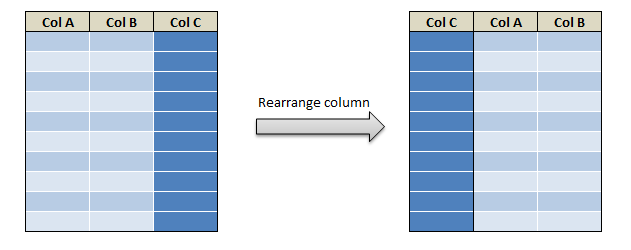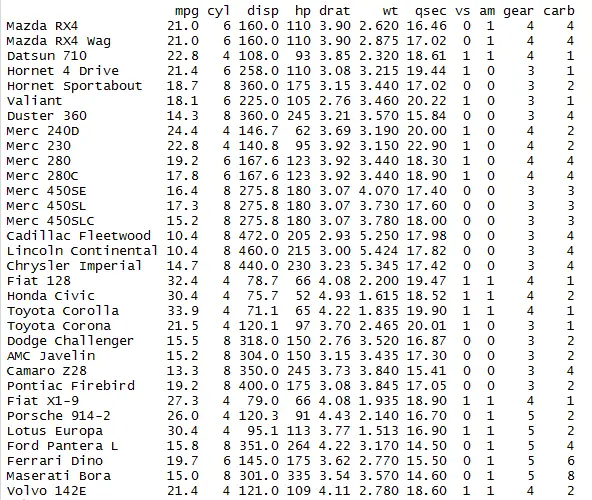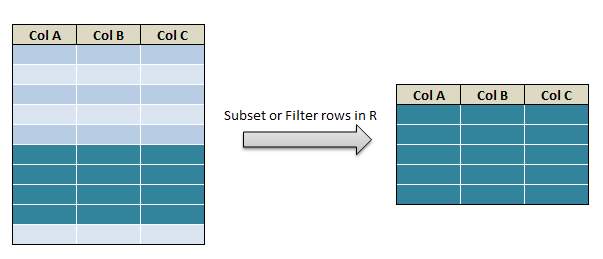Column Bind – cbind in R appends or combines vector, matrix or dataframe by columns. cbind() function in R appends or joins, two or more dataframes in column wise. same column bind operation can also be performed using bind_cols() function of the dplyr package. Lets see column bind in R which emphasizes on cbind() function with an example
What is cbind in R? cbind () — column bind function is used for merging two or more dataframes together given that the number of rows in both the dataframes are equal. cbind can append vectors, matrices or any dataframe by columns.
In this section we will look at
- Example of column bind operation in R by using cbind() function.
- How to perform column bind operation using bind_cols() function of dplyr package
- Whats is difference between cbind() function and bind_cols() Function with an example.
The pictographical representation of column bind operation is shown below. It is simple concatenate of the two or more tables on column wise.
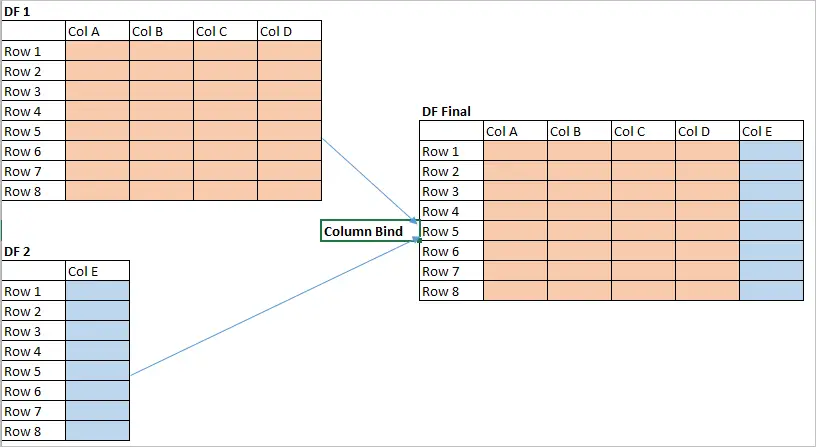
Note : The number of rows in two dataframes needs to be same for both cbind() function and bind_cols() function.
Syntax for cbind() in R:
x1,x2 can be dataframe, matrix or vector.
Example of Cbind in R:
Lets see how to implement cbind() function in R with an example. First lets create two dataframe
#Create two dataframes
df1 = data.frame(name = c("Rahul","joe","Adam","Brendon"), married_year = c(2016,2015,2016,2008))
df1
df2 = data.frame(Birth_place = c("Delhi","Seattle","London","Moscow"), Birth_year = c(1988,1990,1989,1984))
df2
df1 will be
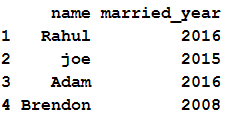
df2 will be
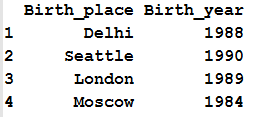
Now, column bind (cbind) concatenates or joins these two dataframe column wise as shown below. cbind() function takes two dataframes as argument and results in the appended or column binded dataframe. The number of rows in two dataframes needs to be same for both cbind() function
# cbind in R: column bind the dataframe. cbinded_df = cbind(df1,df2) cbinded_df
so the resultant column bind dataframe in R will be

Column Bind in R using bind_cols() function of Dplyr()
Syntax for bind_cols() in R:
x1,x2 are the dataframe
Now, bind_cols() function of dplyr, takes two dataframes df1 and df2 as argument and the results are appended or column binded to a as shown below. The number of rows in two dataframes needs to be same for bind_cols() function.
# bind_cols in R: column bind the data frames. library(dplyr) colbinded_df = bind_cols(df1,df2) colbinded_df
so the resultant column bind dataframe by using bind_cols() function will be

cbind() function and bind_cols() Function performs in the similar manner and can be used alternatively for column binding. For Further understanding on bind_cols() function refer r dplyr package document.

